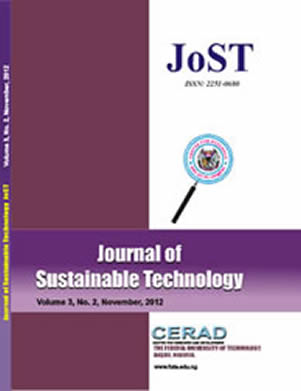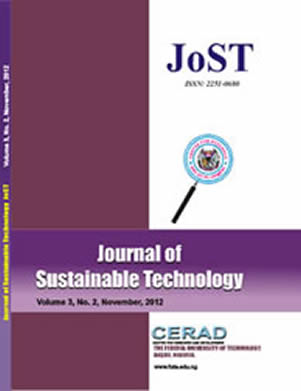An engineering evaluation of the developing parts of Ondo State University of Science
and Technology (OSUSTECH), Okitipupa, Nigeria was carried out using engineering geophysical
approach with the aim of determine the competency of the subsurface soil within the area and
evaluate its engineering implication for infrastructural development. The Electrical Resistivity
Method was adopted. Twenty four (24) Vertical Electrical Sounding (VES) locations were occupied
using Schlumberger electrode configuration with AB/2 varying from 1 to 225 m. This was
quantitatively interpreted using partial curve matching and computer iteration. The results were
used to generate maps, geoelectric sections. Six geologic / geoelectric sequences delineated across
the area are the topsoil, medium sand, coarse grain sand, clayey sand, sandy clay, and clay formation.
The topsoil exhibits relatively high resistivity while the thickness in excess of 1 m. Based on this,
the upper layer can host the foundation of light weight civil engineering structures using strip
foundation. Heavy weight civil structures can be hosted within the second layer (coarse sand) using
deep foundation, since the resistivity value is in the range of 200 to 1950 Ω m. The saturated nature
of this layer must be considered in the design of the foundation. Metallic pipes and tanks can be
buried within the topsoil with limited threatening of corrosion, since the resistivity values of the
topsoil is generally greater than 180 Ω m. There is need for artificial enhancement of the conductivity
of the area before an earthing material can be buried within the area.
Keywords: Engineering Geophysics, Layer, Resistivity, Geoelectric, Corrosivity, Competency
PAPER TITLE :APPLICATION OF ENGINEERING GEOPHYSICS IN SITE INVESTIGATION; A CASE STUDY OF ONDO STATE UNIVERSITY OF SCIENCE AND TECHNOLOGY, OKITIPUPA, SOUTHWEST, NIGERIA
JOURNAL Of SUSTAINABLE TECHNOLOGY | VOLUME 8 NUMBER 2 2017
Paper Details
- Author(s) : AKINTORINWA, O. J.
- Abstract:



